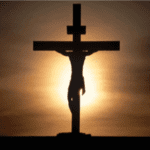![]()
The Largest Religious Gathering in the World
By Daniel C. Peterson and William J. Hamblin
The annual Islamic pilgrimage, or Hajj, has just ended. Estimates for participation suggest that more than two million people converged on Mecca from approximately one hundred nations. Some scholars suggest that the original pre-Islamic Hajj ceremonies of Arabia, out of which the Islamic rituals grow, may be distantly related to the Jewish Feast of Tabernacles and Day of Atonement, but this is uncertain. Since the Islamic religious calendar is a lunar one, and since the lunar year is about ten days shorter than the solar year we are used to in the West, the time of the pilgrimage rotates regularly through all four seasons.
The Hajj is the fifth of the five “pillars,” or fundamental doctrines and practices, of the Islamic faith. All Muslims are required to make the pilgrimage at least once in their lifetime, if they are physically, financially, and mentally able to do so. One school of Islamic law even allows the requirement to be met, vicariously, after one’s death.
Like the five daily prayers of Islam, the rituals of the Hajj focus on the Kaaba, a stone shrine, a cubic building roughly fifty feet high that stands in the ancient town of Mecca where the Prophet Muhammad was born. This building is draped in a huge, gold-embroidered, black silk cloth. (This brocade, the kiswa, is replaced each year at the time of pilgrimage. The kiswa can cost up to $5 million.) Muslims believe the Kaaba to have been built by Abraham and his son Ishmael. But, by the time of Muhammad, pagan practices and apostate beliefs had obscured the divine origins of the Kaaba and its surrounding rituals. Guided by revelation from God, however, Muhammad was able to strip these errors away and restore the Hajj to its pristine purity.
Pious Muslim pilgrims often come early to Mecca. It is considered highly desirable to spend the fasting month of Ramadan there. And many stay later, after the Hajj season, to study or even to die in the holy city. Especially before modern transportation and communications, the Hajj provided an opportunity for Muslims from the furthest reaches of the Islamic world to meet one another. Ideas were shared-and, in fact, many a plot was hatched-in the city that medieval Islamic mapmakers put at the center of the earth.
In order to participate in the rituals of the Hajj, pilgrims enter into a consecrated state known as ihram, that includes, among other things, abstaining from sexual relations throughout the ceremonies. Men shave their heads, while women often cut only a symbolic curl. Participants don a seamless, all white, two-part garment. For the duration of the ceremonies, kings and commoners, wealthy and poor, are outwardly almost indistinguishable.
Pilgrims circumambulate (walk around) the Kaaba seven times. They gather on or near Mount Arafat, twelve miles into the desert from the city of Mecca, where Muhammad is said to have given his final sermon. Thereafter they engage in a symbolic stoning of Satan. At Mecca and around the globe, the pilgrimage ends with animal sacrifices-usually of sheep and goats, although wealthier Muslims sometimes offer camels-from which the meat is distributed to the poor. (Those who don’t relish killing an animal themselves can hire a local butcher to perform the task for them.) Afterwards, pilgrims typically travel northwards to the city of Medina to visit the Prophet’s tomb.
Not everything connected with the Hajj is purely spiritual. Since early times, pilgrims have complained about Mecca’s inflated prices during the pilgrimage season. Jugglers and fakirs entertain the crowds. Still, and even despite the business and carnival atmosphere that can accompany the Hajj, it is unquestionably the peak spiritual experience in the life of any Muslim fortunate enough to participate. He or she will always bear the honorific title of hajji, or “pilgrim.” And it is vital in sustaining the sense of brotherhood between Muslims around the world.
__
F. E. Peters, The Hajj (Princeton, 1994).
Michael Wolfe, One Thousand Roads to Mecca: Ten Centuries of Travelers Writing About the Muslim Pilgrimage (1999).
Ali Shariati, Hajj: Reflection on Its Rituals (1992).
Seyyed Hossein Nasr, Mecca the Blessed, Medina the Radiant: The Holiest Cities of Islam (1997).

















